Toshiba Qosmio F755-3D290: Glasses-Free 3D?
by Dustin Sklavos on November 23, 2011 1:10 AM ESTApplication and Futuremark Performance
We've seen the Intel Core i7-2630QM and NVIDIA GeForce GT 540M paired together enough times that performance is going to be fairly predictable, but unfortunately Toshiba drops the ball hardcore by including a dismally slow 5,400-RPM hard drive, inexcusable on any notebook north of a grand. The result is, as you'll see, a notebook that falls a bit behind competing systems with similar configurations, particularly in PCMark.
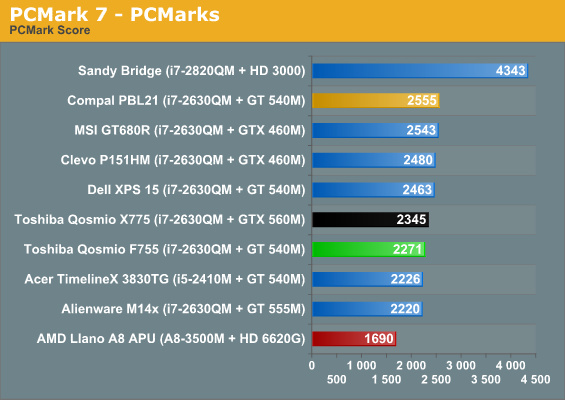
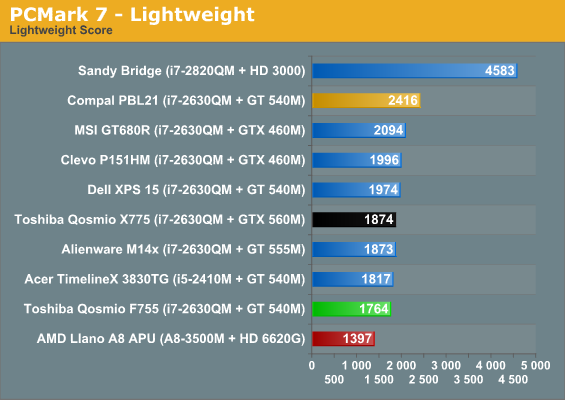
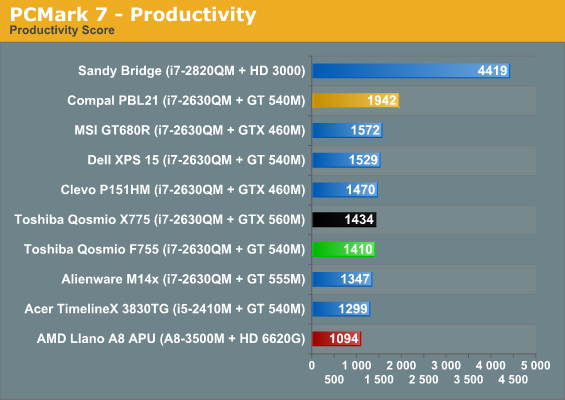
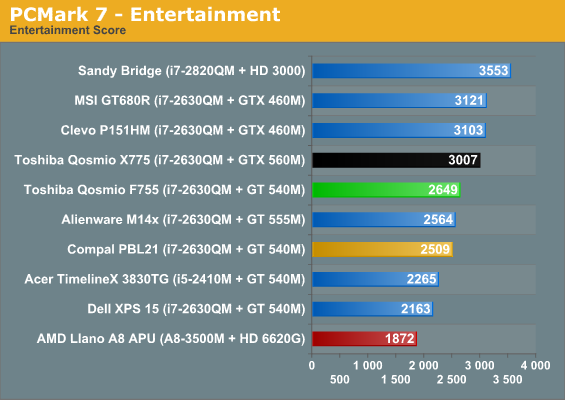
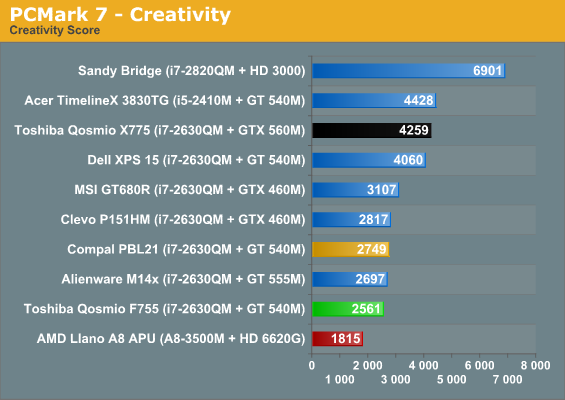

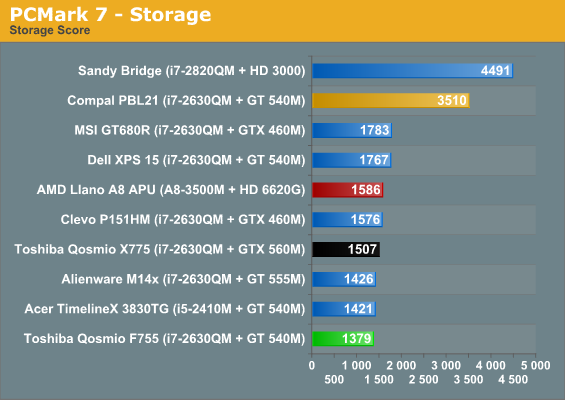
Well, that's too bad. You can see the units that were equipped with SSDs fare better at the storage benchmark, but really, the F755's slow hard drive causes it to come in dead last out of this grouping. In a crowd of similarly-configured notebooks, the F755 puts in a weak showing.

PCMark Vantage seems to be a bit more generous with the F755, giving it a score that hangs out nicely in the middle of the road.
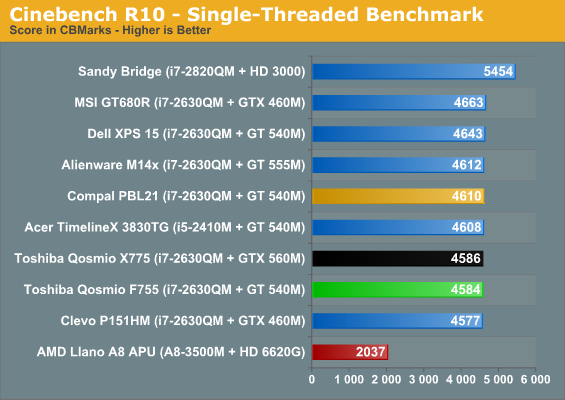
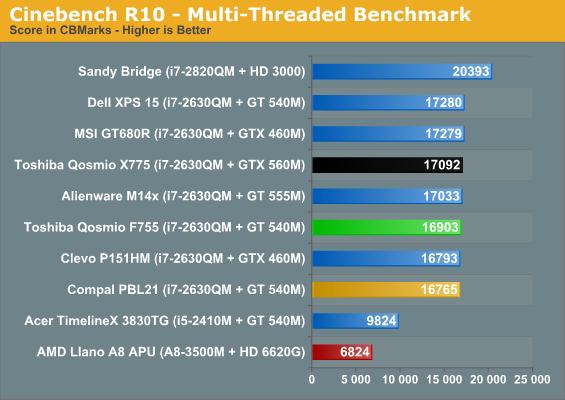
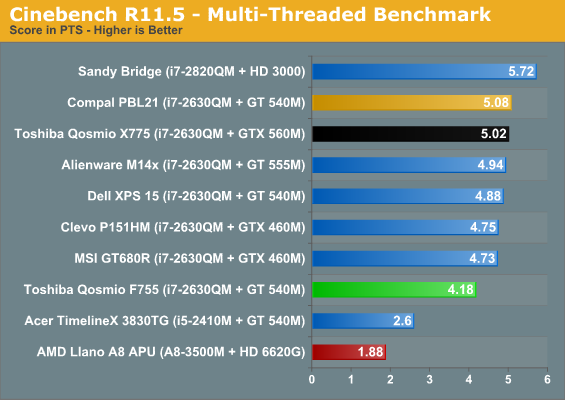
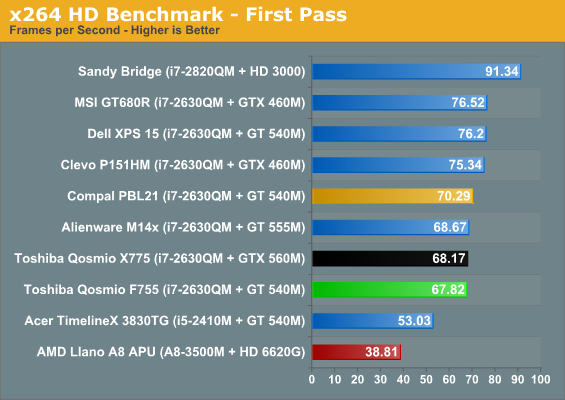
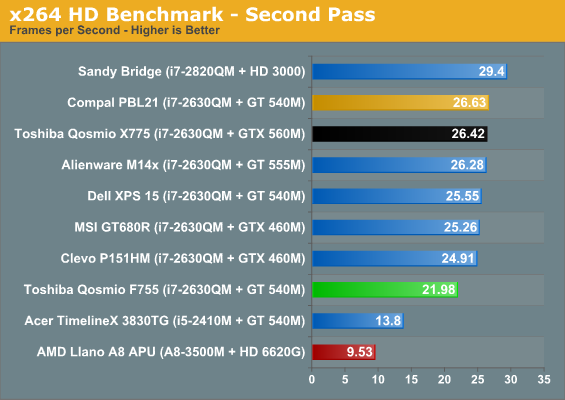
I've always been fond of how consistent Cinebench can be; it's actually one of my favorite benchmarks, and I like having both R10 and R11.5 here because R10 feels more absolute in terms of comparative performance while R11.5 seems better at teasing out minor differences in configurations. While it's not any great difference, the F755 is measurably, consistently slower than other i7-2630QM-equipped notebooks.
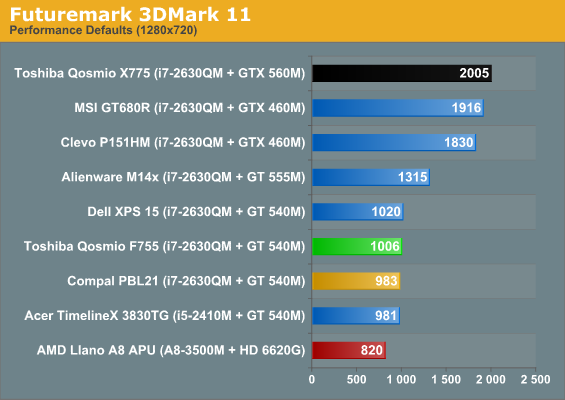
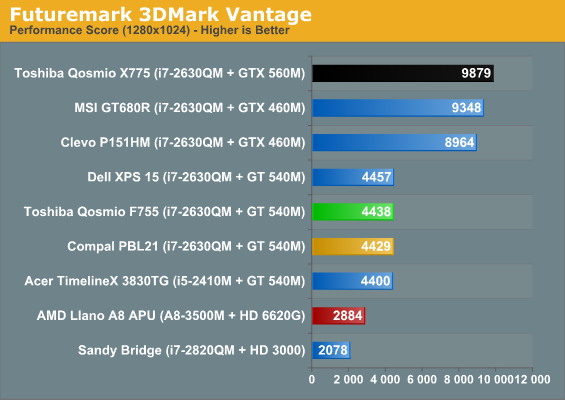
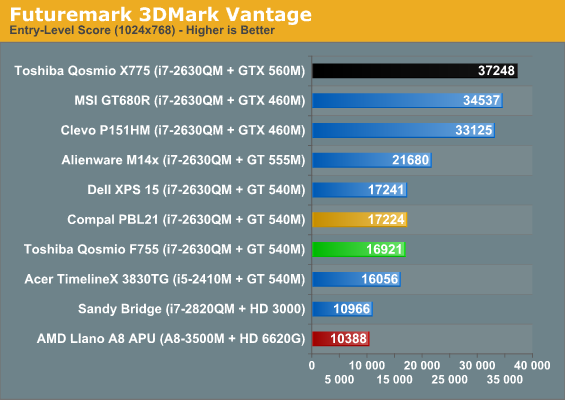
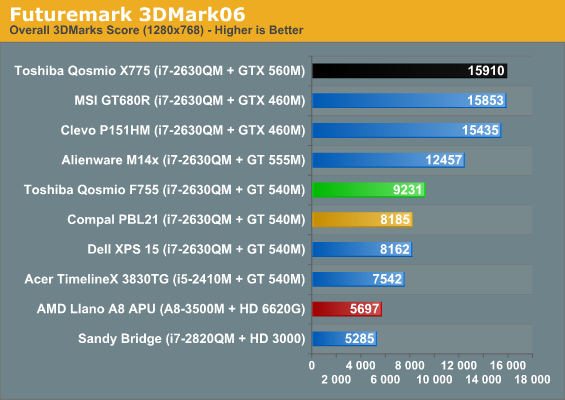
The 3DMarks are also very consistent across the review units. The GT 540M-equipped notebooks all pretty much line up, with 3DMark06 being the only odd man out, boasting a substantially higher score than the others. This should hopefully offer some confirmation that NVIDIA's Optimus is almost all upside.










16 Comments
View All Comments
Denithor - Wednesday, November 23, 2011 - link
Thinking that's supposed to be a laptop model?
eio - Wednesday, November 23, 2011 - link
looks like there are some serious bugs with the software stack...but technically this is one of the most advanced glass-free 3D screen out there, and should provide much more natural & comfortable 3D effect on real 3D content, which could easily beat anything on the consumer market, even the professional market.
it's a pity that it isn't functioning properly in the test.
Matrices - Wednesday, November 23, 2011 - link
I don't know why anyone feels they need an IPS laptop unless they're doing graphics work that requires full color accuracy. The best TN desktop screens provide very good image quality - much better than what was available 2 years ago, and viewing angles are usually less of an issue with laptops.Some laptop screens are good. The Dell 15" that's currently out has an RGB+ option and it looks amazing. The Alienware screens look good if you're OK with glossy.
Braumin - Wednesday, November 23, 2011 - link
Drab washed out screens with a really obvious change of color depending on how you hold it is good image quality?The screen quality is one of the top reasons I just ordered a Thinkpad X220 - IPS screens are just miles above the garbage TN panels everyone is using now (except Apple).
The one thing you use more than anything on a laptop is the screen (more than even the keyboard) so why would you not want a good one?
GuinnessKMF - Wednesday, November 23, 2011 - link
How does the 3D fair in regards to eye strain? I have an Evo 3D phone and it's horrible to look at in 3D mode. Myself and everyone I've shared it with has said "that's cool looking but, it hurts my eyes" The videos are better than pictures, but I much prefer the way active lense 3D treats my eyes.People talk about being uncomfortable with glasses on for 3D content, in my experience the glasses are much better than the glasses-free version.
eio - Thursday, November 24, 2011 - link
the screen on this toshiba laptop shall give much less eye strain than other glass-free 3D screens, and also less than the ones with glasses, if it is functioning.because this screen has an array of adjustable lenticular micro lens on top of the LCD screen, and it will actively adjust the light path to fit with your view point, which is captured by camera in real time.
the down side is it can only be used by one people, since the screen cannot fit with 2 pair of eyes simultaneously. what's why this technology is used on laptop prior than TV